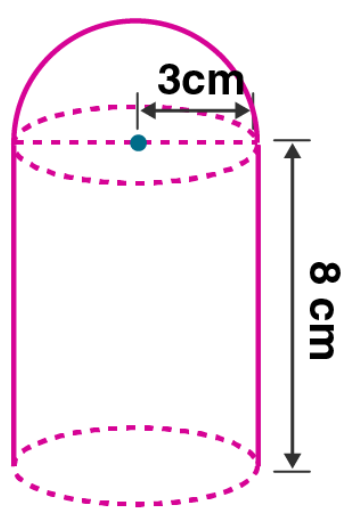
Solution:
Given height of the cylinder, h = 8 cm
Radius of the cylinder, r = 3 cm
Radius of hemisphere , r = 3 cm
Scale = 1:200
Hence actual radius, r = 200×3 = 600
Actual height, h = 200×8 = 1600
(i)Total surface area of the solid = Base area of the cylinder + Curved surface area of the cylinder + curved surface area of the hemisphere
= r2+2rh + 2r2
= r(r+2h+2r)
= ×600(600+2×1600+2×600)
= 600 ×(600+3200+1200)
= 600 ×(5000)
= 3000000 cm2
= 300 m2
Hence the total surface area of the solid is 300 m2.
(ii)Volume of the solid = Volume of the cylinder + Volume of the hemisphere
= r2h + (2/3) r3
= r2(h+ (2/3)r)
= ×6002(1600+ (2/3)×600)
= 360000 (1600+400)
= 360000 ×2000
= 720000000 cm3
= 720 m3
= 720000 litres [1 m3 = 1000 litres]
Hence the volume of the solid is 720000 litres.
